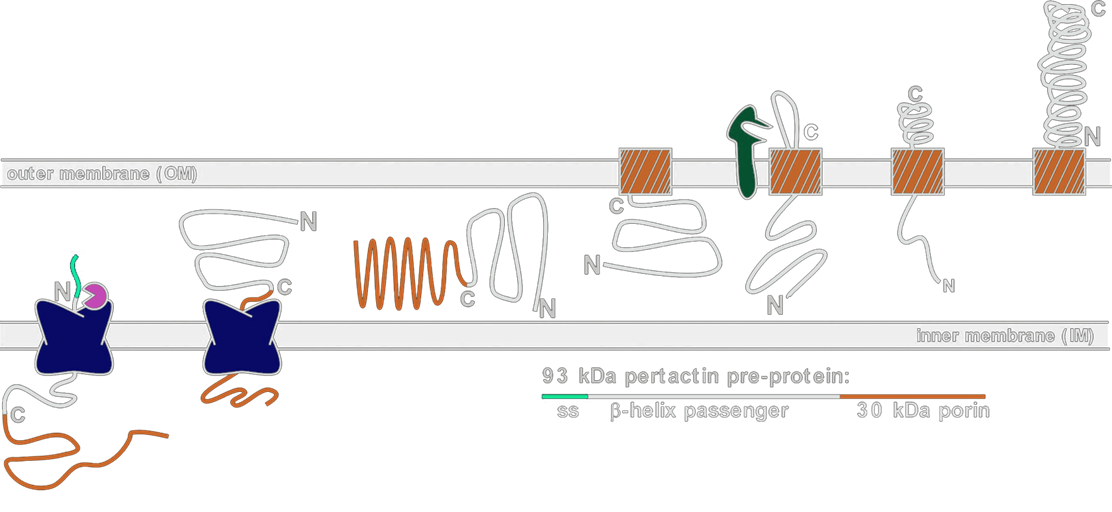Team:Berkeley Wetlab/Cell Surface Display Parts
From 2009.igem.org
Jennbrophy (Talk | contribs) (→Passengers) |
Jennbrophy (Talk | contribs) |
||
| Line 2: | Line 2: | ||
<center> <font size="5" face="Book Antiqua"><b>Cell Surface Display Parts</b></font></center> | <center> <font size="5" face="Book Antiqua"><b>Cell Surface Display Parts</b></font></center> | ||
| - | ==<font size="5" color=#E9AB17>'''Passengers'''</font>== | + | ==<font size="5" face="Magneto Bold" color=#E9AB17>'''Passengers'''</font>== |
<font color="#41383C" size="2">Follow any of the links below to see assay information for each of the passengers we made.</font> | <font color="#41383C" size="2">Follow any of the links below to see assay information for each of the passengers we made.</font> | ||
{| cellpadding="25" cellspacing="0" | {| cellpadding="25" cellspacing="0" | ||
Revision as of 20:14, 19 October 2009
Contents |
Passengers
Follow any of the links below to see assay information for each of the passengers we made.
|
Streptavidin |
Leucine Zippers |
Ag4 Peptide |
|
MGFP-5 |
Cellulases |
TypeIII Needle scFv |
Displayers
An outmembrane protein that carries another protein through the outermembrane
For successful cell surface display of proteins, there must be an effective protein localization mechanism. Gram-negative bacteria such as E. Coli have inner and outer membranes that present a problem for transporting proteins synthesized in the cytoplasm to the outside of the cell. Various transport schemes exist in gram-negative bacteria to effectively localize proteins to the outermembrane. The most common schemes are TypeI, TypeIII, and TypeV secretion. In our display systems, we chose a class of outermembrane proteins called autotransporters that localizes proteins via the TypeV secretion mechanism. This system is particular suited for cell surface display because the outermembrane protein (aka displayer) spontaneously inserts into the outermembrane and pulls the protein it is covalently linked to (aka passenger)into the extracellular space. Moreover, autotransporters are capable of pulling through large proteins, such as enzymes and single-chain variable fragments.
As depicted in the diagram above, the autotransporter localization begins with localization to the periplasm via the Sec secretion pathway. The translocated protein remains unfolded in the periplasm until it inserts into the outermembrane by forming a beta barrel with its C-terminus. The N-terminus of the protein (containing our passenger of interest) is then pulled through the barrel to the outside of the cell.
In constructing our parts, we looked into various autotransporters with different attributes conducive to cell surface display.
azo1653 AtD (putative) - organism Azoarcus sp. (strain BH72)
This protein contains one autotransporter domain of the AT-1 family.
OprF AtD - organism Pseudomonas fluorescens
Cl02365 AtD - organism Neisseria meningitidis
VtaA11 AtD - organism Haemophilus parasuis
Hag AtD - organism Moraxella catarrhalis
Pcryo_1225AtD - organism Psychrobacter cryohalolentis
Hia AtD - organism Haemophilus influenzae
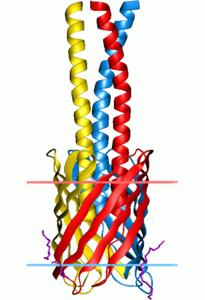
upaG_short - organism Escherichia Coli
espP(beta) - organism Escherichia coli
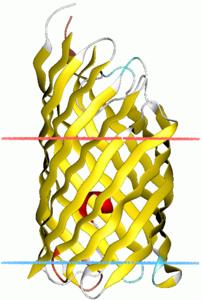
ehaB - organism Escherichia coli
TshA - organism Escherichia coli
subgroup1 of autotransporters
VirG(IcsA) - organism Shigella flexneri
YuaQ AtD - organism Escherichia coli
AIDA-I - organism Escherichia Coli
Ag43_short - organism Escherichia Coli MG1655
Some of these proteins are putative autotransporters that have sequence homology to confirmed autotransporters. We chose these proteins because we wanted to test the functionality of these putative autotransporters and expand the range of displayers available for surface display.
Spacers
Spacer elements occur in natural membrane protein systems. This is exemplified in the Hag protein, autotransporter-containing system containing two spacer beta roll domains, shown below:
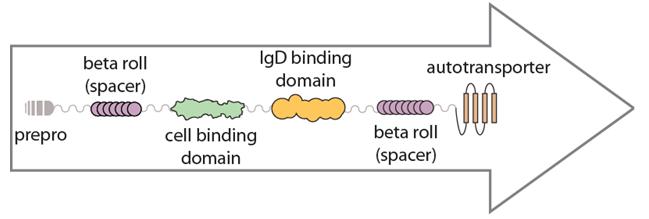
The precise role of spacers in the functionality of proteins has not been extensively characterized; however, as illustrated in the Hag protein, multiple spacer elements are typically present in natural display systems suggesting their importance. We hoped to characterize the effects of the inclusion of spacer elements within our passenger-display design. There were five spacer domains introduced to our surface display system: INP-repeats, beta roll, bet helix, Gly-Ser repeats and GFP-LVA. These elements are further discussed below.
![]()
Repeated portion of ice nucleation protein (INP) sequence.
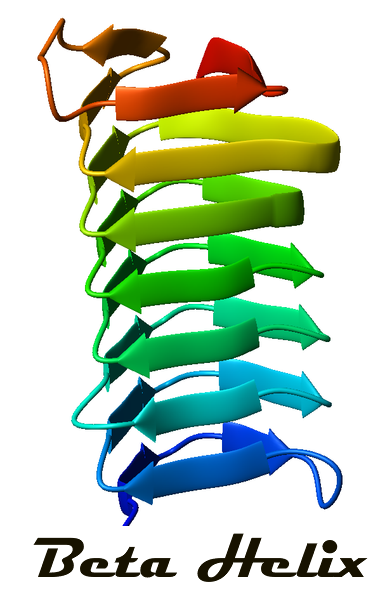
Beta helices are protein helical structures stabilized by hydrogen bonds and protein-protein interactions. The resulting structure contains two to three faces formed by the association of parallel beta strands.
 "
"













